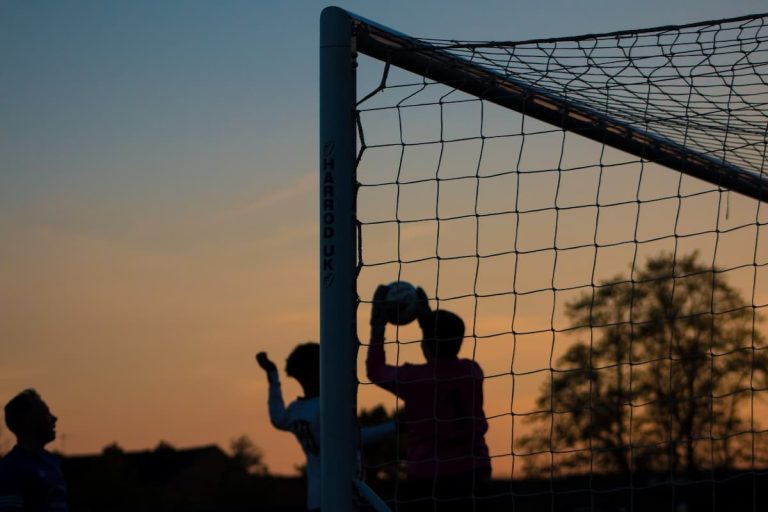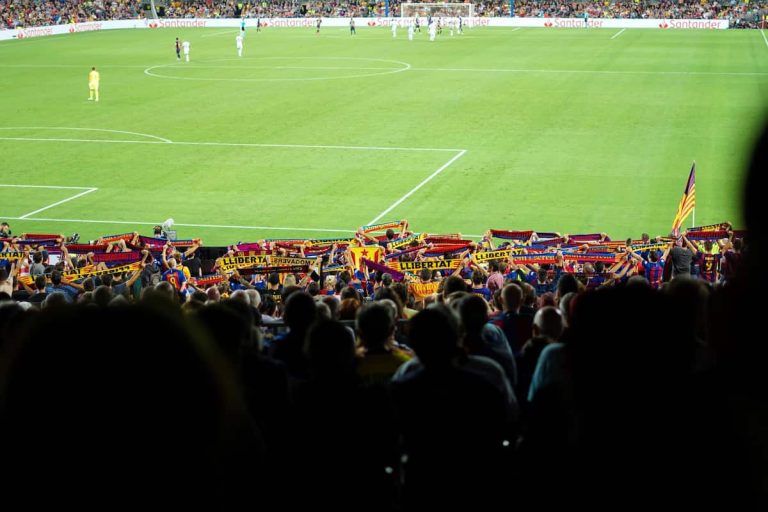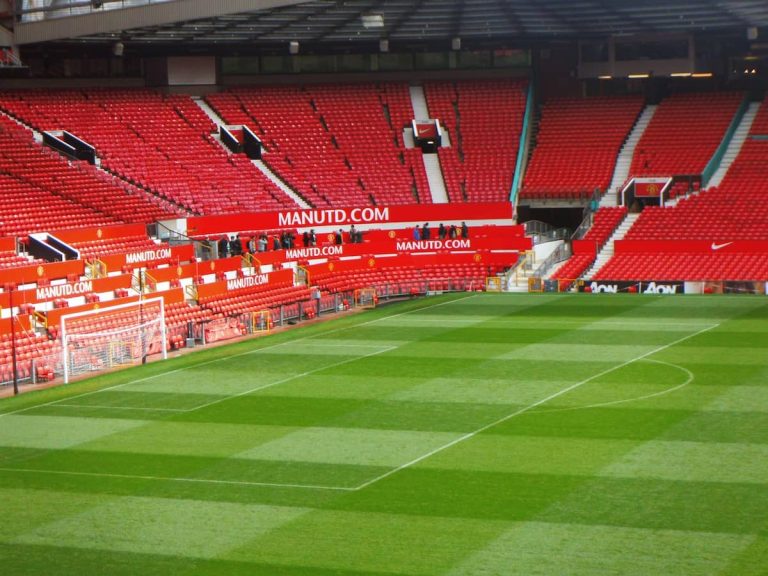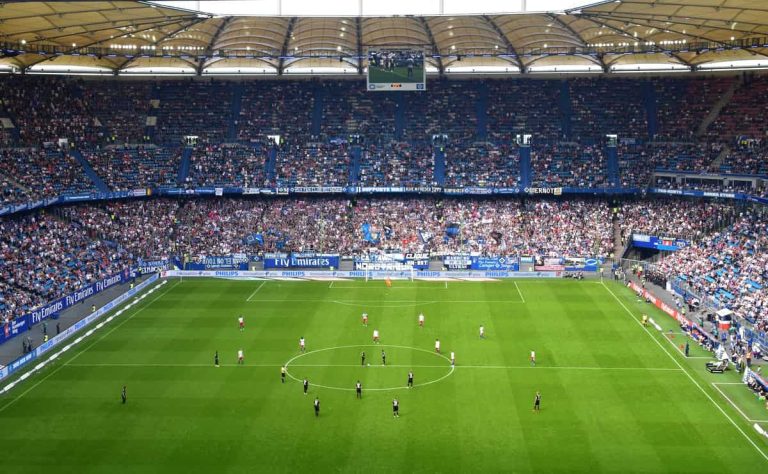How Many Referees Are There in Football?
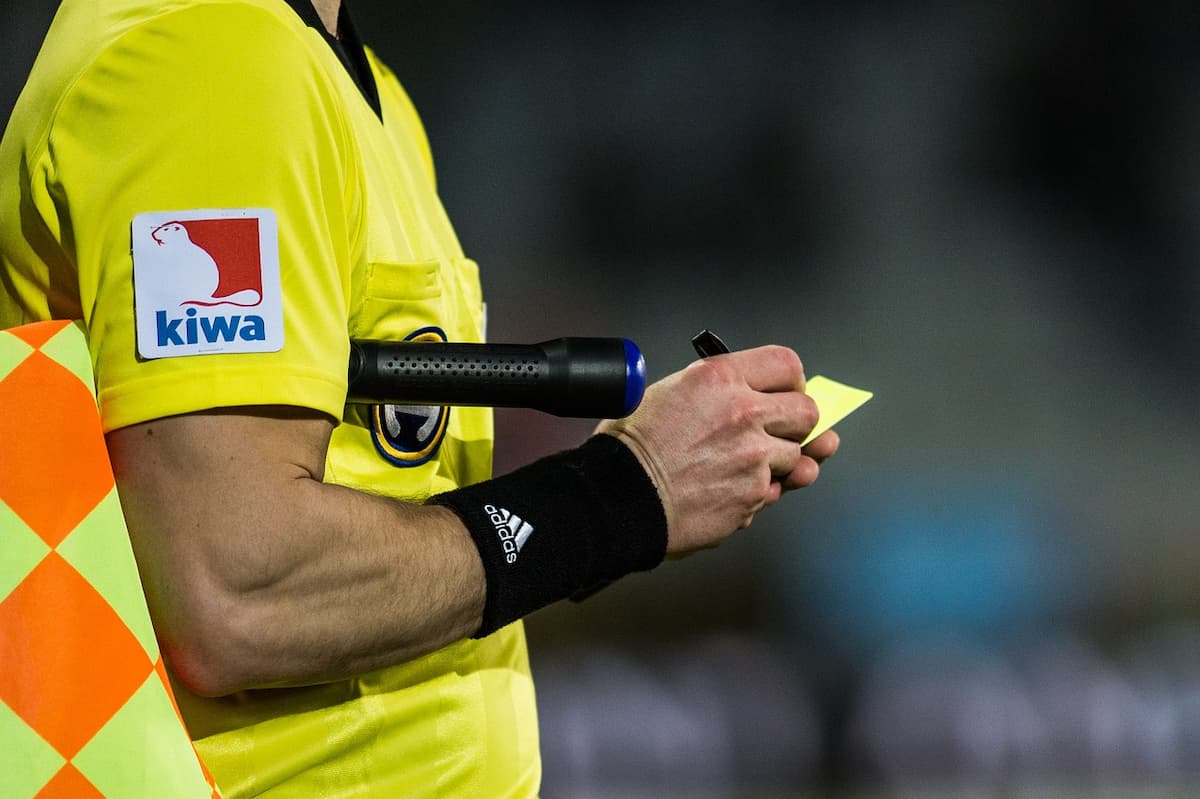
When watching a football match, the referee running around on the pitch with the players often gets the headlines, however did you know that there’s a whole team of other officials supporting them?
In this article, we discuss the names and roles of the other match officials involved in a football match, so if you’ve ever wondered how many referees are in football, this article is for you.
Table of Contents
How Many Referees Are There in Football?
In football, the following match officials work together to officiate a professional football match in line with the Laws of the Game:
- 1x referee
- 2x assistant referees (previously referred to as linesmen)
- 1x fourth official
- 2x additional assistant referees
- 1x video assistant referee (VAR)
- At least one assistant VAR (AVAR)
What Is a Referee in Football?
In football, the referee is a 3rd party who watches the game closely on the pitch, enforcing the Laws of the Game. They run around on the pitch amongst the two sets of players, wearing a different coloured kit to both sides.
Referees have the power to stop the game, book players and make decisions, all while being conscious of maintaining player safety.
Enforcing the Laws of the Game
The main role of a referee is to enforce the Laws of the Game during a match. This is to ensure that the game is fair for both sides and that this is reflected in the final score. There are many Laws of the Game which need to be enforced in football, so referees have to be vigilant and professional to make sure they do this.
Ensuring Player Safety
One of the referee’s main priorities is to ensure that players are safe during a match. For example, if a head injury takes place, the referee has the power to stop the game right there and then to allow the player to receive medical treatment.
If an injury takes place that isn’t a head injury, referees must use their own judgement for when they can stop the game to allow the player to receive treatment. They must do this by following the Laws of the Game, ensuring they don’t give one team an unfair advantage because of their actions.
Maintaining Game Flow
Another priority of a referee is to maintain game flow. There are often lots of stoppages during a football match, which referees should try their best to avoid. This is sometimes hard to achieve, however referees are given the power to stop the game which directly affects game flow.
They should choose to stop the game at the right times in order to maintain a fair game flow, following the Laws of the Game in the process.
On-field Match Officials
At professional level, there are a range of on-field match officials involved in the officiating of a football match. These include the referee, assistant referees, fourth official and additional assistant referees.
As you go down the English football pyramid into semi–professional tiers, there are less match officials involved. This is primarily down to the amount of funding that goes into this standard of football. Semi-professional matches will most likely have a referee and two assistant referees officiating the matches.
Referee
The referee has the most power during a football match and has the final say on all decisions that need to be made. They run around on the pitch amongst the players, wearing a neutral kit that shouldn’t clash with either of the football kits being used.
All other match officials communicate with the referee via communication devices in order to work together to make decisions during a match.
Assistant Referees
During a football match, two assistant referees are located on opposite sidelines and in opposite halves of the pitch. Formerly known as ‘linesmen’ these referees are responsible for alerting the referee of any offsides or fouls that take place during the match.
They are each equipped with a fluorescent coloured flag that helps them communicate their decisions to the referee, as well as being connected to them via a headset. This allows the three referees to communicate with each other during a game to make decisions.
The roles of assistant referees are as follows:
- To indicate when the whole of the ball leaves the pitch, deciding which team gets the subsequent set piece (throw-in, corner kick or goal kick);
- To indicate when a player is in an offside position;
- To indicate when a substitution has been requested;
- To indicate when the goalkeeper moves off the goal line during a penalty kick before the ball has been kicked;
- To monitor substitutions as they take place.
Fourth Official
The fourth official is responsible for assisting the referee and assistant referees during a football match. They usually stand on the touchline, between both side’s dugouts. Their role is often deemed administrative, with them having the following duties:
Pre-Match
- Confirm that all electronic boards or other communication methods used for substitutions and injury time indications are functional and in place.
- Check the pressure of all replacement balls.
- Attend to the referee’s pre-match instructions and establish the proper procedure in case the referee or assistant cannot continue (e.g. due to injury).
During the Match
- Determine their positioning near the touchline, preferably between the technical areas, for the duration of the game.
- Verify that only individuals listed on the official team sheet occupy the technical area, and remind them to act responsibly and stay within the designated area throughout the match.
- Remind those in the technical area, including football managers, that only one person at a time can provide tactical instructions.
- Supply a new football if instructed to do so by the referee, unless the match implements a multiple ball system.
- Direct the physio or doctor to obtain the referee’s approval before entering the pitch.
- Assist the referee at all times and maintain frequent eye contact with fellow officials.
- Keep a comprehensive record of the game, including information on players who have received yellow or red cards.
- Be responsible for managing substitutions and verifying that substitutes’ equipment is in order. Indicate substitutions by displaying the relevant squad numbers on the electronic board and record the exact times that substitutions occur.
- Wait for the referee’s instruction on the minimum amount of injury time before displaying it on the electronic board, without offering their own estimate of lost time to officials.
- Monitor the entrance of the physio, doctor, or stretcher bearers onto the pitch, assuming that the referee has already given permission.
- Maintain order in the technical area and notify the referee of any irresponsible behaviour.
Post-Match
- Comply with the referee’s instructions to supervise players and officials as they pass through the tunnel area to the dressing rooms and serve as a witness in case of any incidents.
- Assist the referee in preparing a comprehensive match report, including information on misconduct, substitutions, technical area regulation violations, and other incidents of note.
- Report any misconduct or similar incidents that occur out of view of the referee and assistants to the appropriate authorities. The fourth official must also inform the referee of any such reports made.
Additional Assistant Referees
FIFA introduced Additional Assistant Referees (AARs) to football in 2012, to aid referees in making decisions. AARs are positioned beside each goalpost, equipped with communication devices to communicate with the referee and other match officials.
Their responsibilities included observing incidents that occur in and around the penalty area and providing the referee with additional information for making decisions on matters such as penalty kicks, offside, fouls, and missed incidents.
During set-pieces like corner kicks and free kicks, AARs monitored players’ behaviour in the penalty area, communicating with the referee about any incidents they may have missed.
AARs could only intervene in situations where the referee misses an incident in their area of responsibility. Their primary role is to assist the referee in making more accurate decisions during the match. They cannot make decisions themselves, but the additional information they provide to the referee can help in decision-making.
AARs are no longer used in football, which is most likely due to the introduction of VAR.
Video Match Officials (VMOs)
When working out how many referees there are in football, we have to consider Video Match Officials (VMOs).
In modern football, there are now a team of VMOs since the introduction of VAR. In the Premier League, VAR was approved by teams for use in the 2019/20 season. VMOs include the roles of a singular Video Assistant Referee and several Assistant VARs.
These officials are usually based in a separate location from where the football match is being played. From this location, VMOs are able to watch a live feed of the match, where they can assist the on-field match officials with any big decisions.
Video Assistant Referee (VAR)
The video assistant referee (VAR) is a match official who can aid the referee in making decisions by reviewing footage only in cases of a “clear and obvious error” or a “serious missed incident.”
These cases relate to goals or no goals, penalties or no penalties, direct red cards (but not second cautions), or cases of mistaken identity where the referee has cautioned or sent off the wrong player from the offending team.
Assistant VAR
In addition to the Video Assistant Referee, there are a team of Assistant Video Assistant Referees (AVARs) who assist the VAR in the following ways:
- Monitor television footage during VAR checks or reviews.
- Maintain a log of VAR-related incidents and any issues with communication or technology.
- Facilitate communication between the VAR and the referee, particularly when the VAR is conducting a check or review. This includes instructing the referee to either stop play or delay the restart.
- Keep track of time lost when play is paused for a check or review.
- Inform relevant parties of any VAR-related decisions.
AVARs will be located in the same off-field location as the main VAR, so they can discuss decisions together before communicating their final decision with the on-field referee.
Conclusion
How many referees are there in football? There are several match officials who work together to officiate a football match in correspondence with the Laws of the Game. In addition to these officials, there are additional people available in case one of the officials gets injured or becomes ill and cannot carry on for the remainder of the game.
With the introduction of VAR in recent years, there is now a team of people working off-field, helping the on-field match officials make big decisions during matches. Although there are four main officials working together on the pitch to make decisions, it is the referee who has the overriding power.
Frequently Asked Questions
How Many Referees Work in the Premier League?
There’s roughly around 20 referees who officiate during each Premier League season, this can fluctuate higher or lower, but the rough figure is around 20.
What are the 4 Referees in Football?
In football, there are 4 on-field referees – one referee, two assistant referees and one fourth official. In addition to these, there are additional assistant referees and a reserve assistant referee.
Why Do Referees Wear Two Watches in Football?
Referees tend to wear two watches during football matches for the two following reasons:- Simplicity – Although both watches feature multiple timers, it’s more convenient to employ one for monitoring match time and the other for calculating stoppage time.- Redundancy – In the event that one of the watches malfunctions, runs out of battery, or accidentally dislodges during a half, the second watch can serve as a replacement.

